Kapil Thadani
SCOT: Self-Supervised Contrastive Pretraining For Zero-Shot Compositional Retrieval
Jan 12, 2025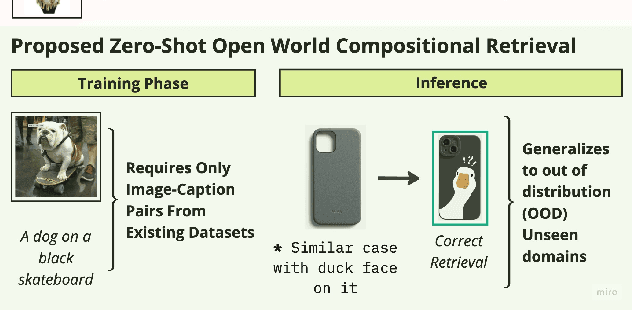
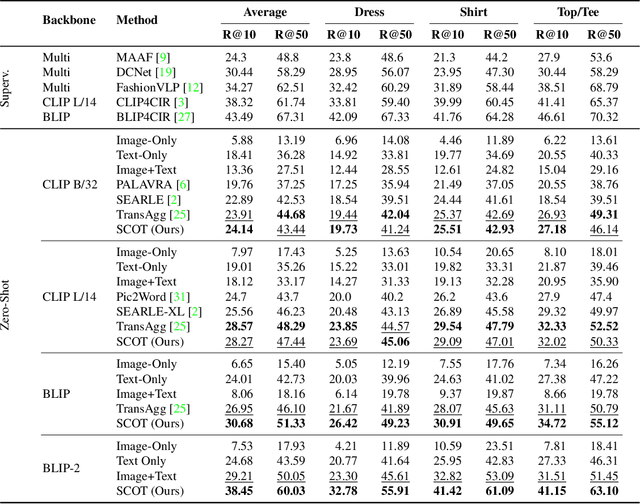
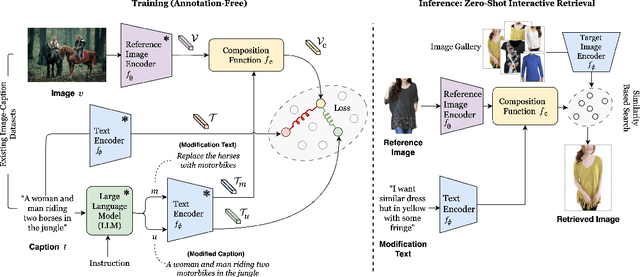
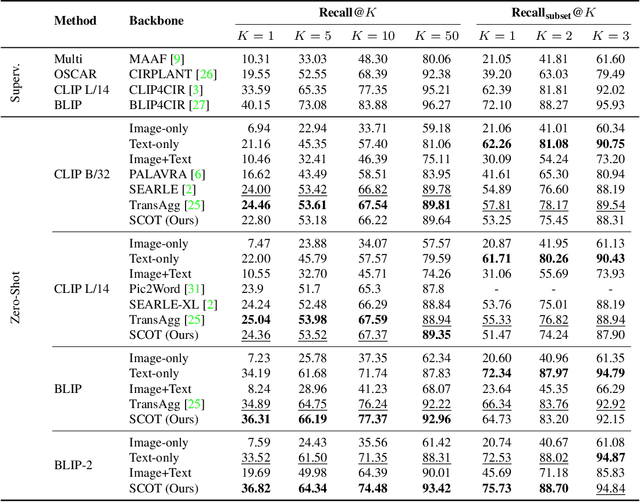
Abstract:Compositional image retrieval (CIR) is a multimodal learning task where a model combines a query image with a user-provided text modification to retrieve a target image. CIR finds applications in a variety of domains including product retrieval (e-commerce) and web search. Existing methods primarily focus on fully-supervised learning, wherein models are trained on datasets of labeled triplets such as FashionIQ and CIRR. This poses two significant challenges: (i) curating such triplet datasets is labor intensive; and (ii) models lack generalization to unseen objects and domains. In this work, we propose SCOT (Self-supervised COmpositional Training), a novel zero-shot compositional pretraining strategy that combines existing large image-text pair datasets with the generative capabilities of large language models to contrastively train an embedding composition network. Specifically, we show that the text embedding from a large-scale contrastively-pretrained vision-language model can be utilized as proxy target supervision during compositional pretraining, replacing the target image embedding. In zero-shot settings, this strategy surpasses SOTA zero-shot compositional retrieval methods as well as many fully-supervised methods on standard benchmarks such as FashionIQ and CIRR.
Scalable Detection of Salient Entities in News Articles
May 30, 2024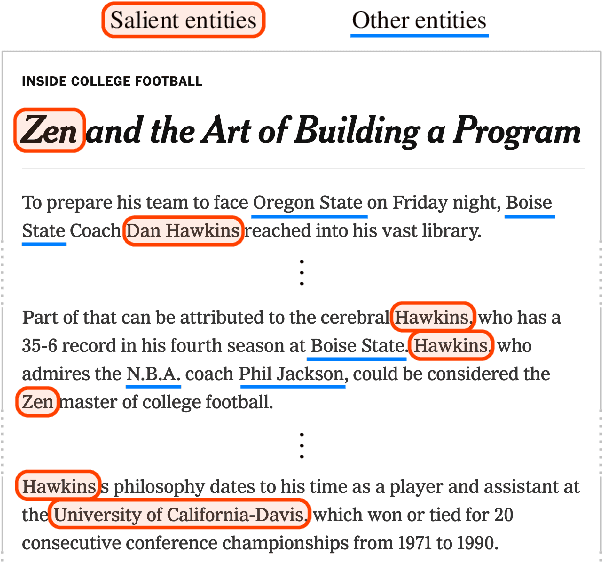



Abstract:News articles typically mention numerous entities, a large fraction of which are tangential to the story. Detecting the salience of entities in articles is thus important to applications such as news search, analysis and summarization. In this work, we explore new approaches for efficient and effective salient entity detection by fine-tuning pretrained transformer models with classification heads that use entity tags or contextualized entity representations directly. Experiments show that these straightforward techniques dramatically outperform prior work across datasets with varying sizes and salience definitions. We also study knowledge distillation techniques to effectively reduce the computational cost of these models without affecting their accuracy. Finally, we conduct extensive analyses and ablation experiments to characterize the behavior of the proposed models.
Salient Object-Aware Background Generation using Text-Guided Diffusion Models
Apr 15, 2024Abstract:Generating background scenes for salient objects plays a crucial role across various domains including creative design and e-commerce, as it enhances the presentation and context of subjects by integrating them into tailored environments. Background generation can be framed as a task of text-conditioned outpainting, where the goal is to extend image content beyond a salient object's boundaries on a blank background. Although popular diffusion models for text-guided inpainting can also be used for outpainting by mask inversion, they are trained to fill in missing parts of an image rather than to place an object into a scene. Consequently, when used for background creation, inpainting models frequently extend the salient object's boundaries and thereby change the object's identity, which is a phenomenon we call "object expansion." This paper introduces a model for adapting inpainting diffusion models to the salient object outpainting task using Stable Diffusion and ControlNet architectures. We present a series of qualitative and quantitative results across models and datasets, including a newly proposed metric to measure object expansion that does not require any human labeling. Compared to Stable Diffusion 2.0 Inpainting, our proposed approach reduces object expansion by 3.6x on average with no degradation in standard visual metrics across multiple datasets.
Powering COVID-19 community Q&A with Curated Side Information
Jan 27, 2021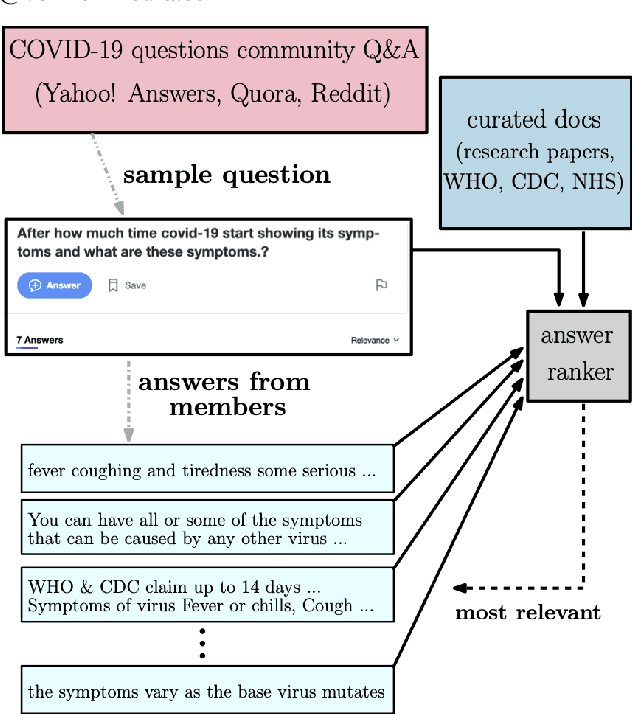

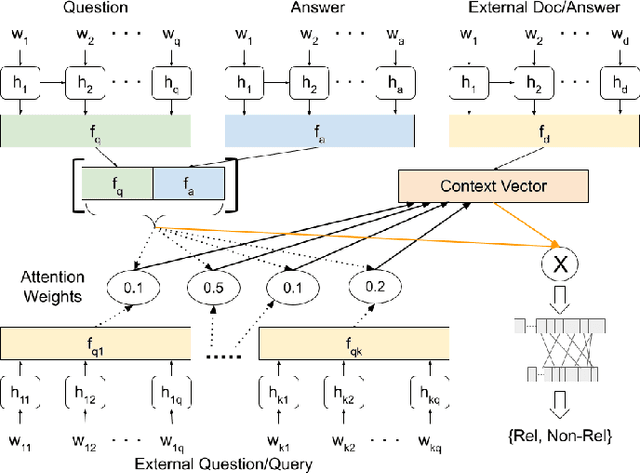
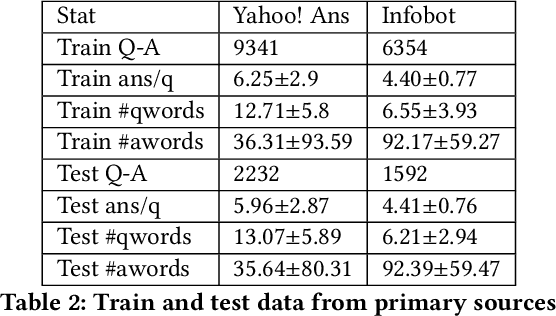
Abstract:Community question answering and discussion platforms such as Reddit, Yahoo! answers or Quora provide users the flexibility of asking open ended questions to a large audience, and replies to such questions maybe useful both to the user and the community on certain topics such as health, sports or finance. Given the recent events around COVID-19, some of these platforms have attracted 2000+ questions from users about several aspects associated with the disease. Given the impact of this disease on general public, in this work we investigate ways to improve the ranking of user generated answers on COVID-19. We specifically explore the utility of external technical sources of side information (such as CDC guidelines or WHO FAQs) in improving answer ranking on such platforms. We found that ranking user answers based on question-answer similarity is not sufficient, and existing models cannot effectively exploit external (side) information. In this work, we demonstrate the effectiveness of different attention based neural models that can directly exploit side information available in technical documents or verified forums (e.g., research publications on COVID-19 or WHO website). Augmented with a temperature mechanism, the attention based neural models can selectively determine the relevance of side information for a given user question, while ranking answers.
Learning to Create Better Ads: Generation and Ranking Approaches for Ad Creative Refinement
Aug 17, 2020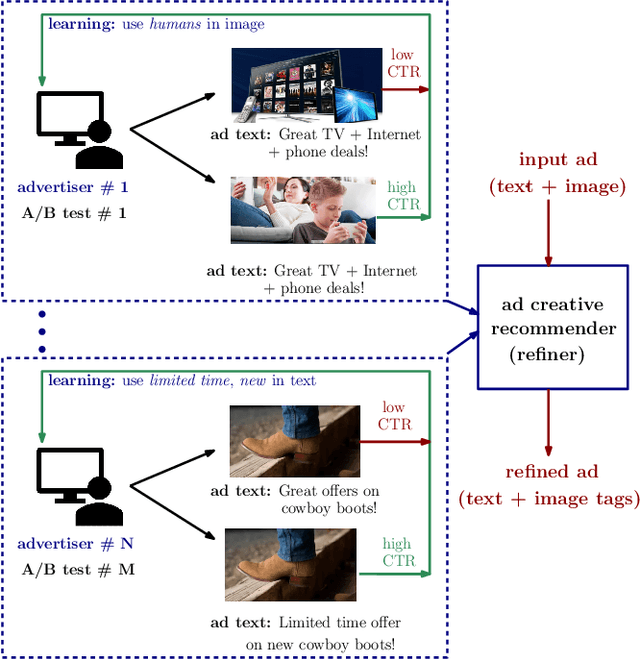
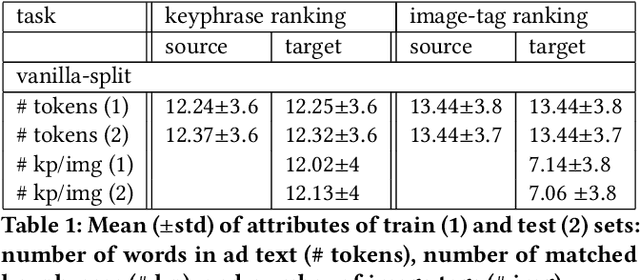
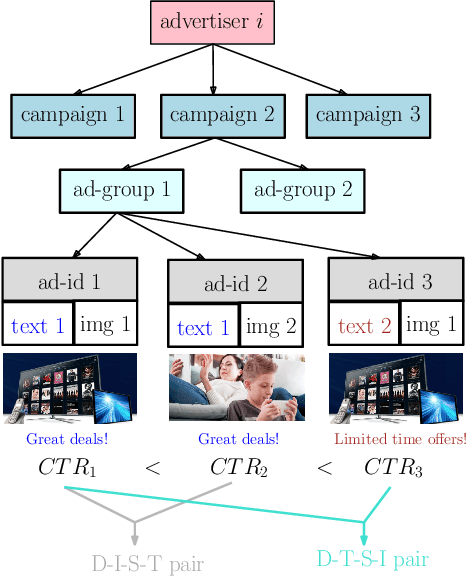
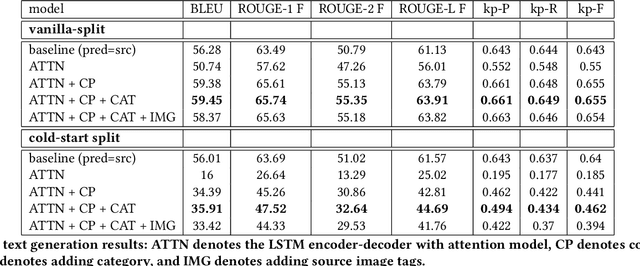
Abstract:In the online advertising industry, the process of designing an ad creative (i.e., ad text and image) requires manual labor. Typically, each advertiser launches multiple creatives via online A/B tests to infer effective creatives for the target audience, that are then refined further in an iterative fashion. Due to the manual nature of this process, it is time-consuming to learn, refine, and deploy the modified creatives. Since major ad platforms typically run A/B tests for multiple advertisers in parallel, we explore the possibility of collaboratively learning ad creative refinement via A/B tests of multiple advertisers. In particular, given an input ad creative, we study approaches to refine the given ad text and image by: (i) generating new ad text, (ii) recommending keyphrases for new ad text, and (iii) recommending image tags (objects in image) to select new ad image. Based on A/B tests conducted by multiple advertisers, we form pairwise examples of inferior and superior ad creatives, and use such pairs to train models for the above tasks. For generating new ad text, we demonstrate the efficacy of an encoder-decoder architecture with copy mechanism, which allows some words from the (inferior) input text to be copied to the output while incorporating new words associated with higher click-through-rate. For the keyphrase and image tag recommendation task, we demonstrate the efficacy of a deep relevance matching model, as well as the relative robustness of ranking approaches compared to ad text generation in cold-start scenarios with unseen advertisers. We also share broadly applicable insights from our experiments using data from the Yahoo Gemini ad platform.
 Add to Chrome
Add to Chrome Add to Firefox
Add to Firefox Add to Edge
Add to Edge